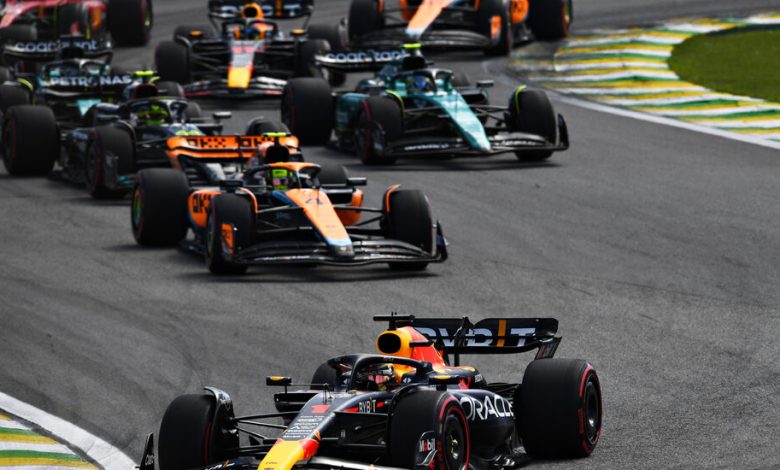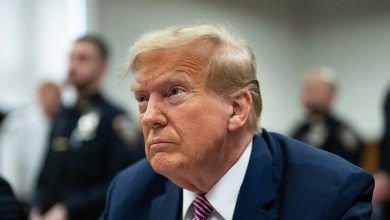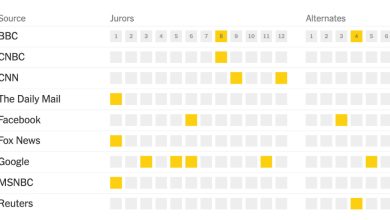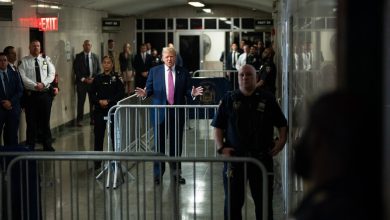Teams Will Spend the Off-Season Seeking Ways to Be More Competitive

Formula 1’s 2022 season was one of the most one-sided in history, as Max Verstappen streaked to the world championship with a record number of wins in a single season.
Yet 2023 turned out to be even more emphatic.
“I don’t think we will ever be able to repeat the season we’ve had,” said Christian Horner, team principal of Red Bull.
Of the year’s 22 Grands Prix, Red Bull won 21, with Verstappen winning 19, a record, including a run of 10 successive wins, also a new bench mark.
Red Bull’s dominance has been chastening for its proud rivals and anticipated opponents, Mercedes and Ferrari, while McLaren and Aston Martin have both risen as contenders. The big talking point now is whether any of them can challenge Red Bull in 2024.
Toto Wolff, the Mercedes team principal, was ashen-faced after the season opener in Bahrain, when the extent of the deficiencies of the team’s car, the W14, was realized.
Mercedes had stuck with a design concept called zeropod — featuring extremely slender sidepods, which are designed to feed the fast-moving air created by the car’s speed more efficiently to its rear-end. The team swiftly accepted that the new approach, introduced at the start of 2022, was flawed, and shook up their staffing. The team restored James Allison as technical director, and moved his successor, Mike Elliott, into the chief technical officer role. (Elliott then left the team in October.)
Mercedes was second in the constructors’ championship, but finished the season without a single win and scored 409 points to Red Bull Racing’s 860.
For the design of the team’s 2024 car, Mercedes will, according to Wolff, “change the concept.” He added that the team is “completely moving away from how we laid out the chassis, the weight distribution, the airflow.”
“I mean literally there is almost every component that has been changed,” he added, “because only by doing that do we have a chance.”
George Russell, who delivered Mercedes’s only win of this regulatory era in São Paulo, Brazil, in 2022, is aware of the challenge.
“I think the task for everybody is massive,” Russell said. “We’re all trying to catch up to the most dominant car in F1 history. So that’s no short task, and everybody’s going to have to come together, really focused, really put everything into it and time will tell. But I think we’re going into this winter in a much better place than we were 12 months ago and two years ago. So we hope we’re not going to stumble over anything.”
Ferrari briefly challenged Red Bull in early 2022 before its title bid unraveled. Its 2023 tilt never got going, with its car initially unpredictable for its drivers, though one of its drivers, Carlos Sainz, delivered the only non-Red Bull win, in Singapore.
“I think we’ve progressed quite a lot throughout the season, which is positive and makes me confident for the future,” said Charles Leclerc of Ferrari. “But there’s a big gap to fill” to catch up with Red Bull, he added, “so we’ll work hard during the winter break and hopefully we’ll come back stronger next year with a car that is capable of winning.”
Some teams have also spent the latter stages of 2023 experimenting with updated components, partially sacrificing race prospects, to assess them for 2024.
“We openly said that we would need to try some things for next year, which we did in a couple of races,” said Mike Krack, team principal of Aston Martin. His team vaulted from the midfield to become a regular finisher on the podium in 2023, a year in which its new factory opened in Silverstone, England, as part of its long-term title aspirations.
The Renault-owned Alpine team had a mixed season, placing on the podium twice, but falling to a less competitive sixth in the championship. It undertook midseason managerial changes as part of the French manufacturer’s desire to return to the front.
“From what I’m seeing inside the team, we’re really trying to improve everywhere,” said Pierre Gasly of Alpine. “We’re really aware of our weaknesses, and our potential, we know the areas where we’ve got to get stronger, and there’s processes put in place to tackle these weaknesses.
“I have no guarantees that next year we’ll have a car that will allow me to get the position, or the targets, we set ourselves at the start of the year, but all I can see now is we’re trying as hard as we can to get there.”
Another factor for the off-season is that new chassis regulations for 2026, which are still being defined, loom on the horizon. Teams want as much carry-over as possible from the 2024 car into the 2025 car, so that finite resources can be diverted to the new 2026 project during the off-season of 2024-25, with work permitted to begin on the 2026 project on Jan. 2, 2025. Any slip-up in the next few months could have long-lasting effects.
The year 2026 “will be a completely new journey for everyone,” said Andrea Stella, team principal of McLaren. “I don’t think there will be much you can transfer from these cars onto those cars, aside from general methodologies,” he said, adding that, most likely, the new cars will be smaller and less aerodynamic.
The problem for the chasers is that Red Bull still has a sizable advantage. Verstappen had little need to truly push in many of his wins this year, taking one win in Hungary by a margin of 33 seconds, and the team is not standing still. The regulations remain relatively static for the next two seasons, and there are less than 100 days until 2024’s campaign begins. And in Verstappen it has this generation’s standout driver.
“It’d be wrong to just leave it alone as our opposition are getting a bit closer,” said Paul Monaghan, chief engineer of Red Bull, when discussing its car in São Paulo in November.
“It perhaps wouldn’t surprise you,” he said, to learn that the 2024 car will be “an evolution of the current car. It’d be a bit foolish to just throw this concept away, but equally we’ve got to make some progress and find some lap time, as if our opposition makes a step we’d better have a bigger step. But it carries over a lot of the lessons and benefits of the current car, and come Bahrain next year we’ll see if we’ve done a good enough job.”
Verstappen, too, sees room for improvement in 2024.
“We are also working on our car to try and make it better,” he said. “I think we know our weaknesses, as well in the car. And that’s what we’ll of course try to work on, plus, of course, trying to make our strengths even stronger.
“In general, on street circuits, I think we are struggling a bit more. Low speed is definitely not our strongest point in the car; bumps, curbs as well. So that’s definitely a big area where we can improve.”
Recent Formula 1 history shows championship wins turn into dynasties. Michael Schumacher and Ferrari won five successive titles in the early 2000s, Sebastian Vettel won four in a row with Red Bull in the early 2010s, before Lewis Hamilton claimed six from 2014 through 2020 for Mercedes. Verstappen is now on a streak of three straight.
“Red Bull won by 17 seconds and they’ve not touched the car since August or July,” said Hamilton, a winner of 103 Grands Prix, after finishing ninth at the season-closing Abu Dhabi Grand Prix. “So you can pretty much guess where they’re going to be next year.”



